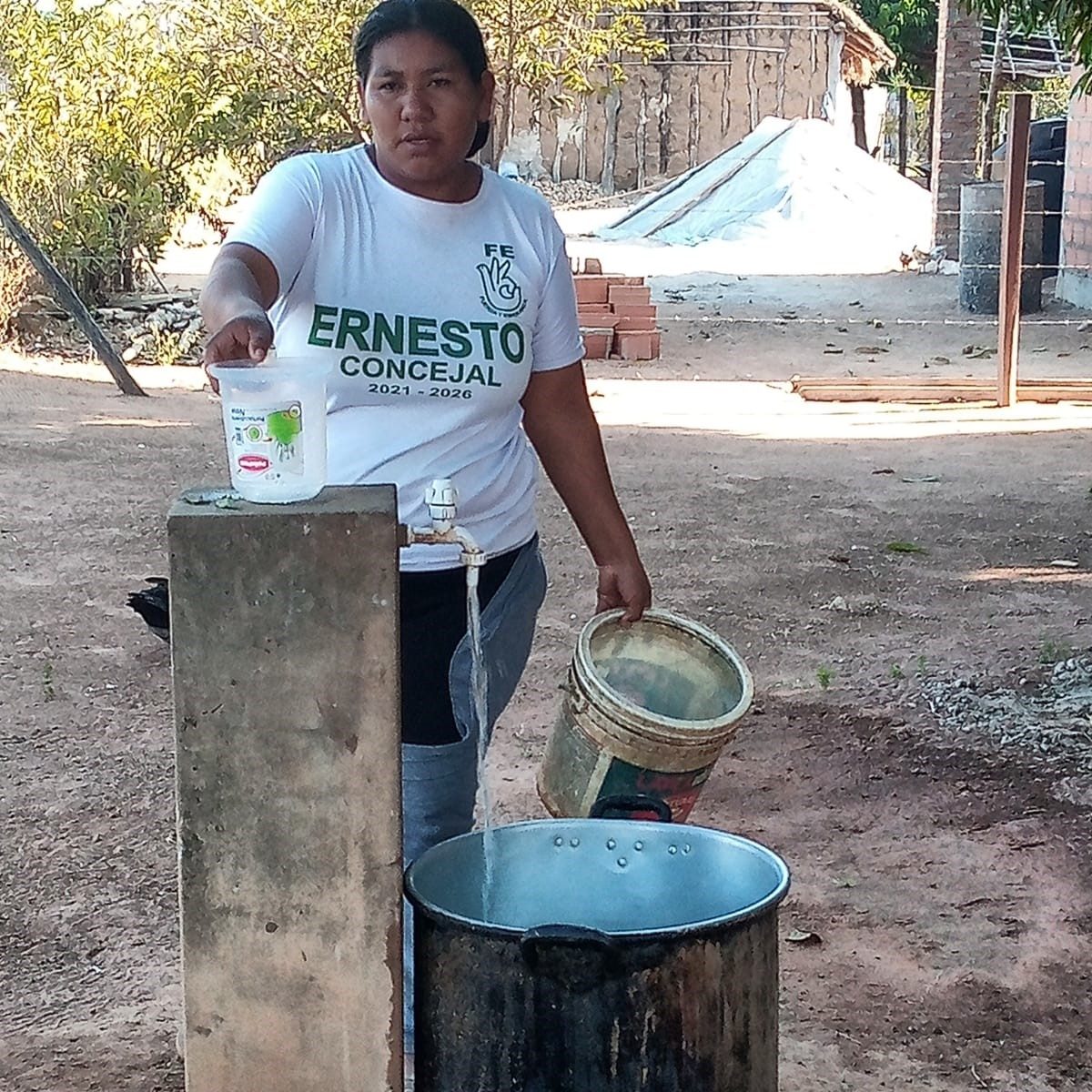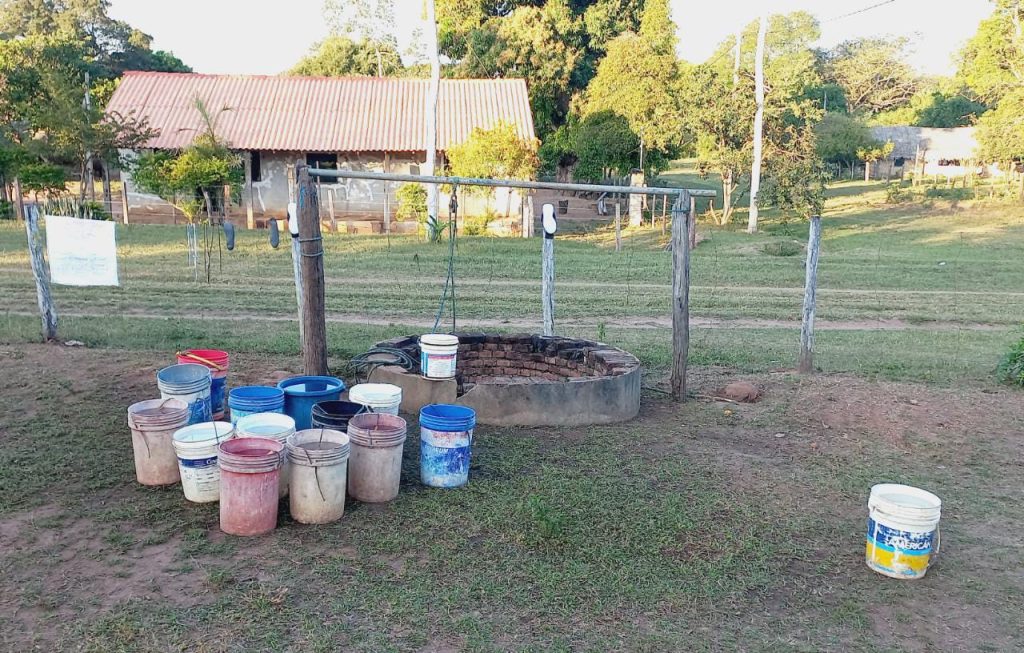Bird Brewery supports the Indonesian maleo via the…
03 April, 2025
Friday 17 may 2024
Photo: the Chiquitania forest. © SAVIA
The Chiquitania is home to a myriad of species, including several that are endemic. The forest provides critical habitat for a diverse range of wildlife, including threatened mammals such as the giant armadillo and the maned wolf, and serves as a vital area for bird conservation. The Royal Botanic Gardens, Kew and other scientific bodies have stressed the importance of conserving Chiquitania[1]https://www.kew.org/read-and-watch/chiquitania-tropical-importance, identifying it as a key area due to its unique flaura and faune, which are highly susceptible to land use changes. Its rich biodiversity not only plays a crucial role in maintaining ecological balance but also contributes significantly to the global biological heritage.
Recent scientific studies have highlighted the critical role of the Chiquitania in regulating land surface temperatures, thus contributing to mitigating climate change effects. Deforestation in the region, driven by agricultural expansion, illegal and legal settlements, and forest fires, is leading to an increase in land surface temperatures, reducing the forest’s resilience and affecting its ability to cool the surrounding environment. A study evaluating forest cover loss and land surface temperatures between 2001 and 2021 found a significant increase in temperatures in deforested areas compared to those with forest cover, emphasising the need for conservation[2]https://www.mdpi.com/2073-445X/12/1/2.
In recent years, the Chiquitania forest has experienced intense pressures from agribusiness, who are the main deforestation drivers in the area. The expansion of soy and maize cultivation, primarily for biodiesel production, along with cattle ranching, has led to widespread deforestation and land degradation in this region. Notably, these agricultural activities are largely driven by export demands rather than local consumption needs. Countries like China play a major role in driving the demand for these commodities, significantly influencing land use patterns in Chiquitania. This international demand encourages the conversion of forested areas into agricultural land, exacerbating deforestation and its associated impacts, such as habitat loss and increased forest fires.
Our local partners have been campaigning to raise awareness on the misconception propagated by the agribusiness sector. While their narrative suggest that these activities are aimed at feeding the Bolivian people, the reality is that these businesses are capitalising on deforestation to fuel exports, prioritising profits over local food security and environmental sustainability.
– Antonio Sanjinez, Probioma‘Current policies promoting agrofuel production are increasing demand for oil crops like soybeans and sugar-rich crops such as sugarcane. There are also plans and financial incentives to expand African Palm monoculture in the Amazon.’
The situation of deforestation in the Chiquitania region is critically exacerbated by government policies that have historically favoured agricultural expansion. For example, significant legislative measures, such as laws and decrees, have been enacted to encourage the clearing of land for agribusiness, facilitating easier access to forest lands for large-scale agricultural producers and livestock owners, often leading to deforestation of large areas and massive forest fires[3]https://elproyectoesperanza.com/2020/medio-ambiente/ecocidio-en-la-chiquitania-boliviana/. Moreover, these government policies have sometimes included incentives for the use of genetically modified crops and the expansion of biofuel production. Such initiatives, while economically beneficial in the short term, have contributed to the degradation of vast areas of the Chiquitania forest, affecting biodiversity, reducing carbon storage capacities, and impacting the ecological balance.
Added to the aforementioned threats, forest fires, frequently linked to both natural causes and human activities such as slash-and-burn clearing for agriculture, pose another major threat to the Chiquitania. These fires are often exacerbated by dry conditions and by the types of monocultures planted, which can be more susceptible to burning compared to the natural forest. The cumulative effect of these threats places immense pressure on the Chiquitania.
According to the latest GFW report, the region saw a significant increase in primary forest loss due to fires in 2023, highlighting the severe impact these events have on forest ecosystems. The combination of human-induced deforestation for agricultural expansion and natural factors such as severe droughts has created a recipe for disaster. The impact of these fires is profound, not only on the biodiversity and ecological balance of the region but also on local communities who depend on the forest for their livelihoods and well-being.
Working with partners to protect the Chiquitania, we’ve seen the crucial role of local civil society organisations (CSOs). Our partners’ visits and meetings with local communities have shaped context-based forest conservation strategies. Responding to water scarcity concerns from IP&LCs, they’ve integrated water governance solutions into these plans. For example, local partners have been actively involved in data gathering, mobilising communities, and implementing community-based water monitoring systems. They’ve also organized workshops with regional and national authorities and filed complaints to the agro-environmental tribunal. Additionally, they have contributed to UPR reports, ensuring that local voices and environmental concerns are heard on an international level.
These efforts have already led to concrete achievements, such as water committees now securing a seat at the table of local and regional governments, directly influencing water governance and conservation decisions.
IUCN NL has supported local partners in Bolivia both financially and technically. Our role has been multi-faceted, including providing funding, connecting partners with research organisations, assisting with territorial protection and security, and elevating these issues to the international stage through mechanisms like the UPR and CEDAW.

Agribusiness practices are significantly impacting water availability in the region through both deforestation and intensive water use. Clearing forests for agricultural expansion disrupts the hydrological cycle by diminishing the land’s capacity to absorb and retain water, leading to reduced groundwater recharge and increased runoff. In the Chiquitania region of Bolivia, agribusiness is pushing the deforestation and water scarcity to limits which are affecting local communities severely.
– Miguel Miranda, CEDIB‘There are many testimonies from IP&LCs expressing deep concerns about the water shortage, which has reached critical conditions, such as requiring water supply through tanker trucks for several months of the year. For now, municipalities are handling these emergency measures, but in the short term, their capacities will be overwhelmed as more communities need this supply and the dry months increase. It is already a disaster situation.’
In the Chiquitania region, agribusinesses heavily rely on groundwater accessed via unregulated and poorly managed wells, leading to significant depletion of water tables. This excessive extraction impacts both surface and groundwater availability, reducing flow to vital water bodies upon which communities depend. Additionally, the widespread use of groundwater for irrigation and decentralised water storage such as atajados for cattle watering is intensifying these effets, altering natural water tables and affecting water availability downstream. For example, unauthorised dams constructed by cattle ranchers and agribusiness operations have significantly depleted the San Lorenzo river, leaving little water to reach downstream communities.

In a 2020 study, the Stockholm Environment Institute (SEI) emphasises the significant impact of land use changes on water management in the Chiquitania region[4]https://www.sei.org/publications/the-chiquitania-fires-water-resources/. According to SEI, ongoing urban and agricultural expansion is placing additional stress on both surface and groundwater resources. SEI’s analysis suggests that these changes necessitate a better understanding of the regional water supply and the implications of water diversions and extensive groundwater use for agriculture. This understanding is pivotal for crafting policies that regulate groundwater use and ensure sustainable water management.
The current approach to land use, driven largely by international demand for biofuels and agricultural commodities, not only undermines the ecological stability of Chiquitania but also threatens the basic human rights of Indigenous Peoples and Local Communities (IP&LCs). Policies should focus on safeguarding the rights of IP&LCs, ensuring their access to forest and water resources. This includes implementing effective water management strategies that acknowledge the hydrosocial water cycle[5] and address the deforestation drivers in the region.
In conclusion, the Chiquitania Forest’s unique biodiversity and ecological functions underscore the urgent need for effective policies that prioritize forest and water resource conservation over agribusiness. This priority becomes even more crucial considering that the industry largely fails to benefit local communities.
Through the Forests for a Just Future programme by the Green Livelihoods Alliance, IUCN NL contributes to more sustainable and inclusive management of tropical forests that supports climate mitigation and adaptation, human rights, and the livelihoods of Indigenous Peoples and Local Communities.
